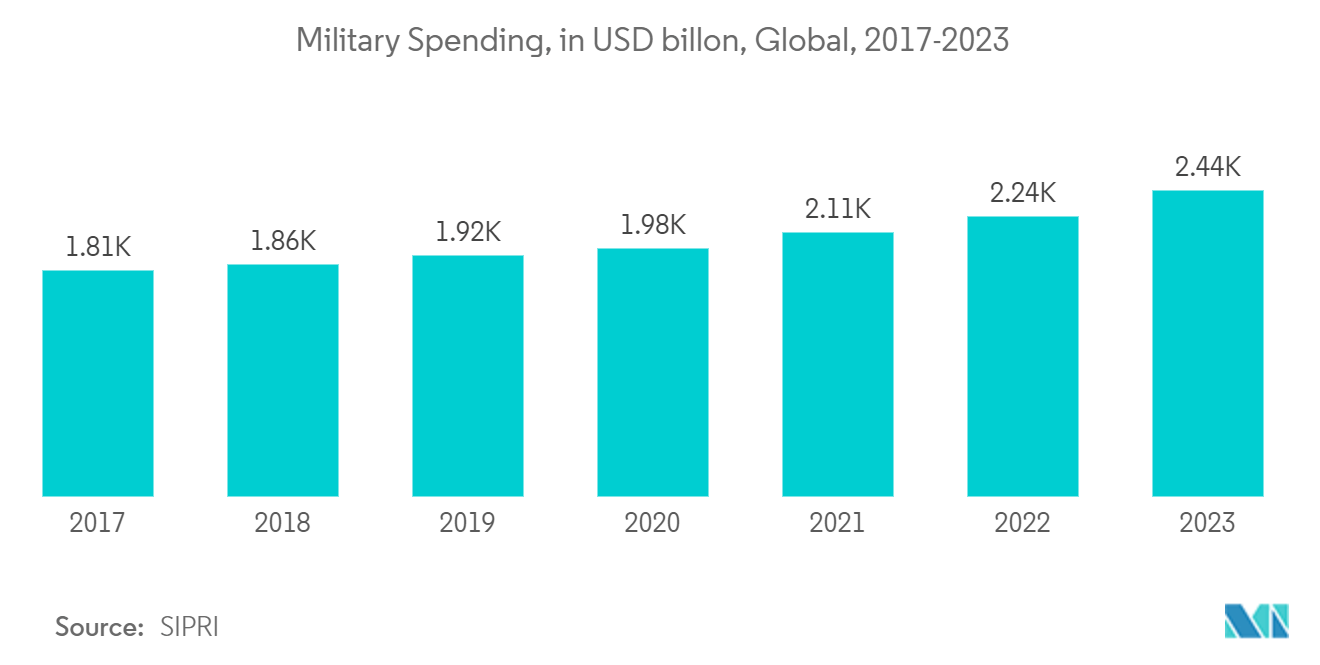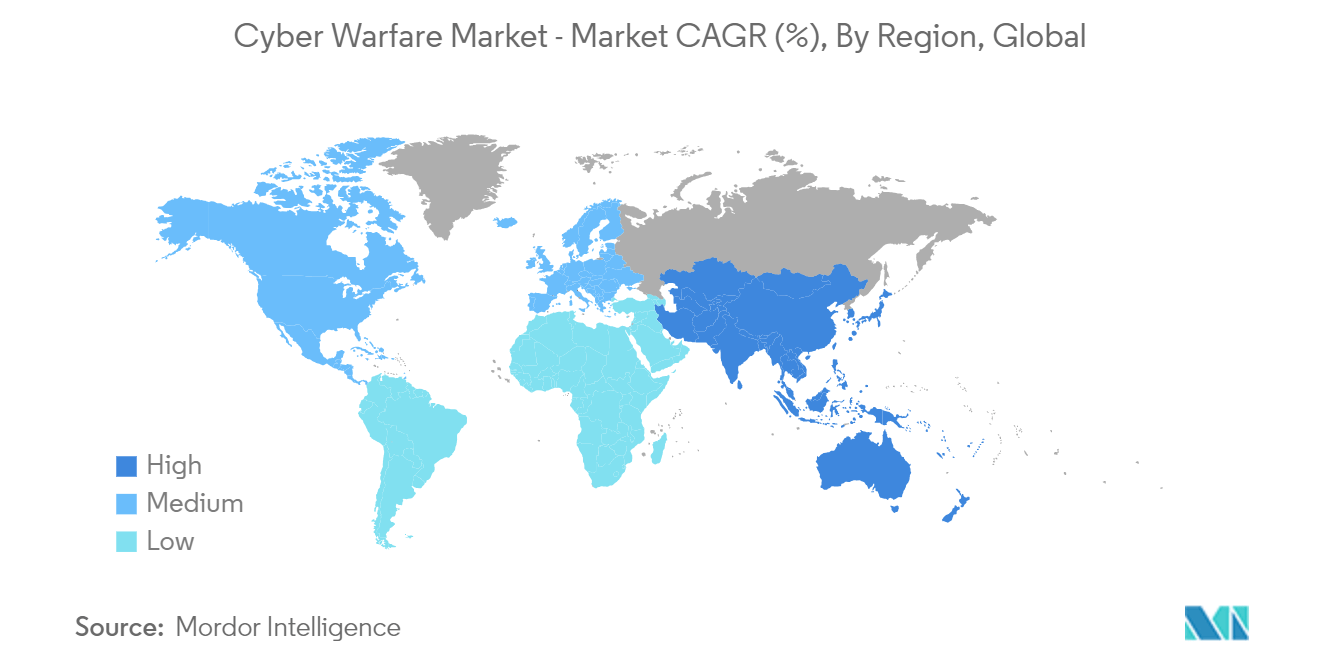Market Trends of Cyber Warfare Industry
Defense is Expected to be the Largest End-user Industry
- The defense segment is expected to hold a significant market share in the cyber warfare market. The defense industry is investing heavily in digital security units to moderate and discourage potential risks from country and state programmers. The rise of innovations and the Internet of Things (IoT) in the resistance are expected to be the driving components for the use of the digital fighting framework in the defense industry.
- There has been significant growth in investment in cybersecurity solutions to avoid theft of intellectual property and compromising systems that are used to monitor and control the country's defense systems and capabilities. Countries have developed new technologies, such as unmanned vehicles and hypersonic weapons, to keep pace with modern defense advancements.
- These advancements are highly dependent on data and connectivity, making them susceptible to breaches and attacks. Technological advancements in the defense industry may present opportunities as well as risks for international peace and security. Thus, there is a growing necessity for countries to focus on developing countermeasures by adopting cyber warfare solutions to safeguard critical information.
- Moreover, while defensive cyber operations are necessary to protect a network, governments worldwide also focus on offensive cyber operations (OCOs) in military planning. In April 2023, the UK government adjusted its cyber response to the growing threat of nation-state adversaries. This was in line with its latest National Cyber Strategy (NCS) published in December 2022. After introducing the National Protective Security Authority, the government decided to communicate about its offensive cyber capabilities. The National Cyber Force (NCF) of the country shared the principles under which it conducts covert offensive cyber operations.
- Additionally, the increasing defense expenditure of various countries in the past few years has created growth potential for adopting cyber warfare solutions. For instance, according to the data from SIPRI, military spending worldwide significantly rose from USD 1.80 billion in 2017 to USD 2.44 billion in 2023.
- North America is expected to be a prominent market for adopting cyber warfare solutions in the coming years. The significant presence of major market vendors, coupled with a substantial rise in military expenditure in the past few years, indicates growth potential for adopting cyber warfare solutions in the region's defense industry.

North America is Expected to Hold Significant Market Share
- The digitalization trends in the public and private sector organizations of the United States and Canada are raising the vulnerability of the region's digital infrastructures by exposing digital services to cyberattacks. This scenario would fuel the adoption of cyber warfare solutions in North America due to their capability to protect, detect, and prevent cyber threats.
- The global rivalry between the United States, Russia, and China for geo-political reasons has led to increased cyberattacks on the IT infrastructures and functions of the United States due to the trend of cyber wars. For instance, in June 2023, the Cybersecurity and Infrastructure Security Agency, a government-owned agency of the United States, stated that US federal government agencies were hit in a global cyberattack by Russian cybercriminals, and the US Department of Energy was victimized among the multiple federal agencies breached in the hacking campaign.
- The governments of the United States and Canada are investing in their strategic priorities to strengthen their cyber security defense and offense to be competitive in cyberspace. This may create an opportunity for market vendors, such as General Dynamics and Boeing, in the North American market due to their expertise in providing cyber warfare solutions.
- Innovation, Science and Economic Development Canada established a non-repayable contribution agreement with selected applicants to form a Cyber Security Innovation Network in Canada with USD 80 million over four years (2021-22 to 2024-25). The Canadian government introduced this network with a vision to support research and development in the Canadian cybersecurity space by collaborating with the country's post-secondary institutions, the private sector, and other partners to accelerate the growth of innovative cybersecurity products and services, fueling the commercialization of cyber warfare solutions in the country during the forecast period.
- The BFSI sector of the region is significantly contributing to the market share of the North American cyber warfare market because financial sectors of the region have prioritized their strategy in strengthening cyber security to fight against the increasing number of cyber attacks. In addition, the four cyber security laws proposed in 2023 in the United States by the New York State Department of Financial Services (NYDFS) aim to strengthen the cyber defense mechanism of the region's financial sector, which would create an opportunity for market growth.


